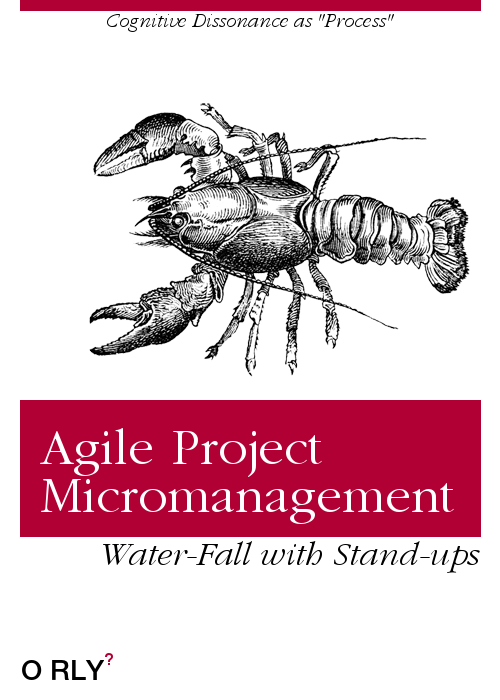
In the heart of a bustling tech hub, a new methodology was born, not out of necessity, but from an overzealous manager's dream: Agile Project Micromanagement. It promised the speed of Agile with the control of... well, a control freak. This groundbreaking approach introduced the world to the ultimate paradox—Cognitive Dissonance as "Process", or as the insiders called it, "Water-Fall with Stand-ups".
The first principle of Agile Project Micromanagement was simple: every task, no matter how small, required its own stand-up meeting. These weren't your run-of-the-mill stand-ups; oh no, they were marathons of meticulous detail. Developers would recount their keyboard strokes per minute and justify each coffee break with a corresponding spike in productivity. Project managers, armed with an array of colorful post-it notes and Gantt charts that looked more like abstract art, oversaw the proceedings with the zeal of a game show host.
But the true innovation of Agile Project Micromanagement lay in its unique approach to sprint planning. Sprints lasted precisely 2.5 days, a duration scientifically calculated to maximize anxiety while minimizing actual output. The tasks, broken down into micro-tasks, then nano-tasks, ensured that every moment of a developer's day was accounted for, including bathroom breaks, which were, of course, stand-up only.
In this world, "pair programming" took on a new meaning. It involved one developer writing code while another stood behind them, whispering motivational quotes from famous military leaders and occasionally tapping the "motivate" button on a custom-built app that emitted a sound eerily similar to a whip crack.
Code reviews were akin to reality TV show auditions, where developers presented their code in front of a panel of judges who critiqued not only the quality of their work but also their choice of variable names and font size. The feedback was brutal but fair, with comments like, "This variable name lacks the emotional depth of a truly impactful piece of software."
Despite—or perhaps because of—its intensity, Agile Project Micromanagement had its success stories. Teams reported unprecedented levels of engagement, primarily because they were too afraid to look away from their screens. The methodology's crowning achievement was the development of an app that did nothing but remind users of their next stand-up meeting, which, ironically, became a hit among managers looking for a more efficient way to micromanage.
In the end, Agile Project Micromanagement was remembered not as a sustainable methodology but as a cautionary tale about the dangers of taking good ideas to their most absurd extremes. Yet, in the hallowed halls of software development folklore, tales of its practices live on, serving as a reminder that sometimes, less is indeed more, and that perhaps the best way to manage a project is to let the people who do the work, well, do the work.